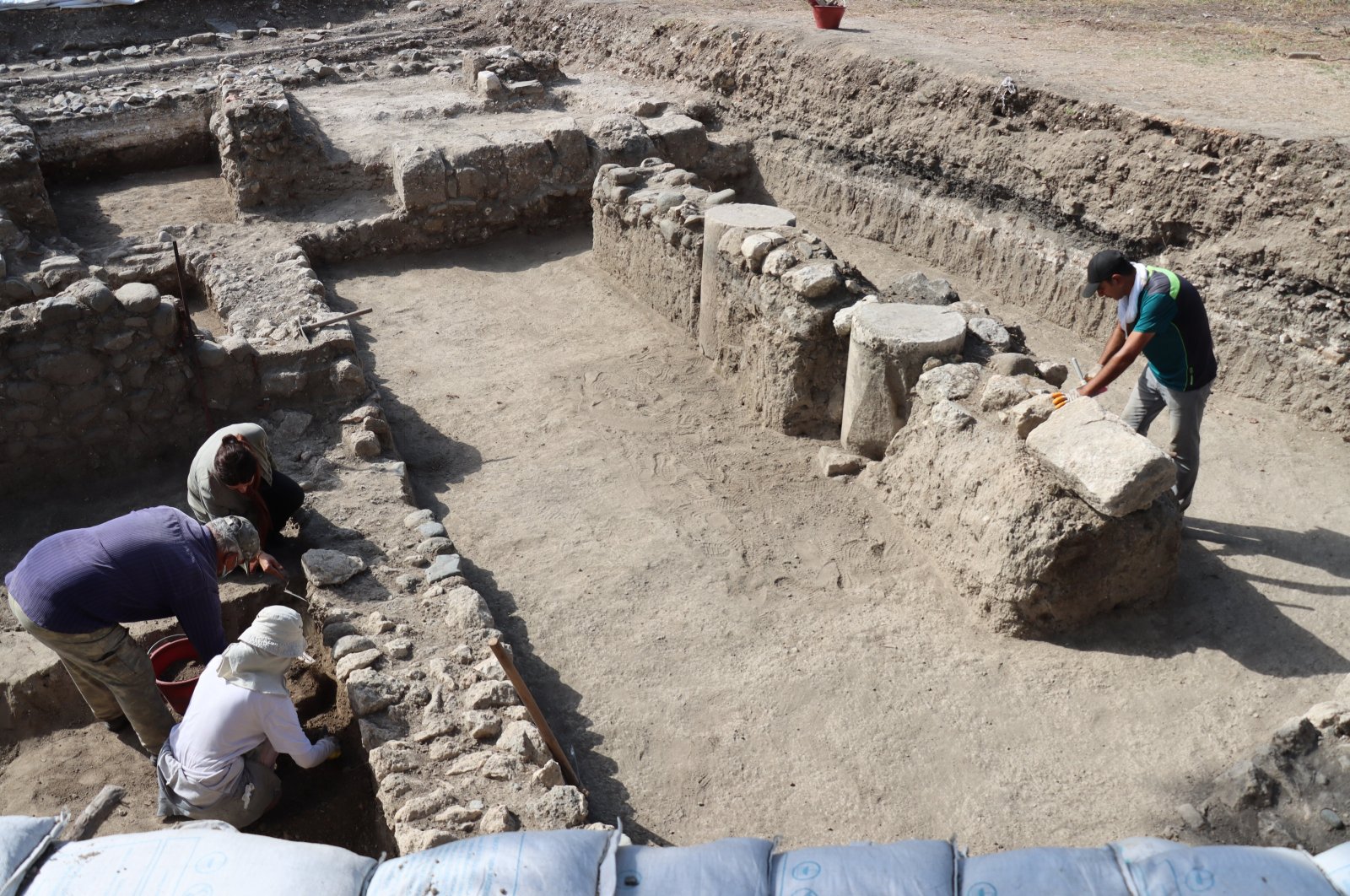
Two figurine fragments were uncovered in archaeological excavations conducted around the ancient hippodrome of Antakya in Hatay.
The excavations at the hippodrome in the Küçükdalyan neighborhood of Antakya, supported under the "Heritage for the Future Project" led by the Ministry of Culture and Tourism, have focused on the area known as the "palace area."
In the work conducted by a 20-person team led by professor Hatice Pamir, a faculty member of the Department of Archaeology at Hatay Mustafa Kemal University, to uncover the urban structure of ancient Antioch, two figurine fragments made of fired clay were found.
In the team's initial examination, it was determined that one of the fragments, which included the head and part of the torso, depicted a "Sophist," an ancient philosopher, and dated back to the early Hellenistic period, between 300 and 200 B.C.
The other figurine's head was also found to date to the late second century B.C.
Excavation leader Pamir told Anadolu Agency (AA) that the area consists of the hippodrome, a temple and a palace complex.
She stated that this is the first time they have found a fired clay figurine fragment from the Hellenistic period in the archaeological work. "One of the artifacts is a figurine depicting a 'Sophist' from the ancient era, philosophers and traveling educators who transmitted intellectual knowledge. We know that ancient Antioch was always prominent for its intellectual institutions. The discovery of an artifact from the Hellenistic period is extremely important as it shows that intellectual education was taking place at that time," she explained.
Pamir also mentioned that they determined the piece was not made from a mold but rather crafted by an artist using free technique.
Pamir highlighted that the other find was also significant, saying, "We consider the head of this figurine, which dates back to the late second century B.C., could be a piece of an object used inside a home or possibly a children's toy."
She added that the fragments have been placed under protection at the Hatay Archaeological Museum.
